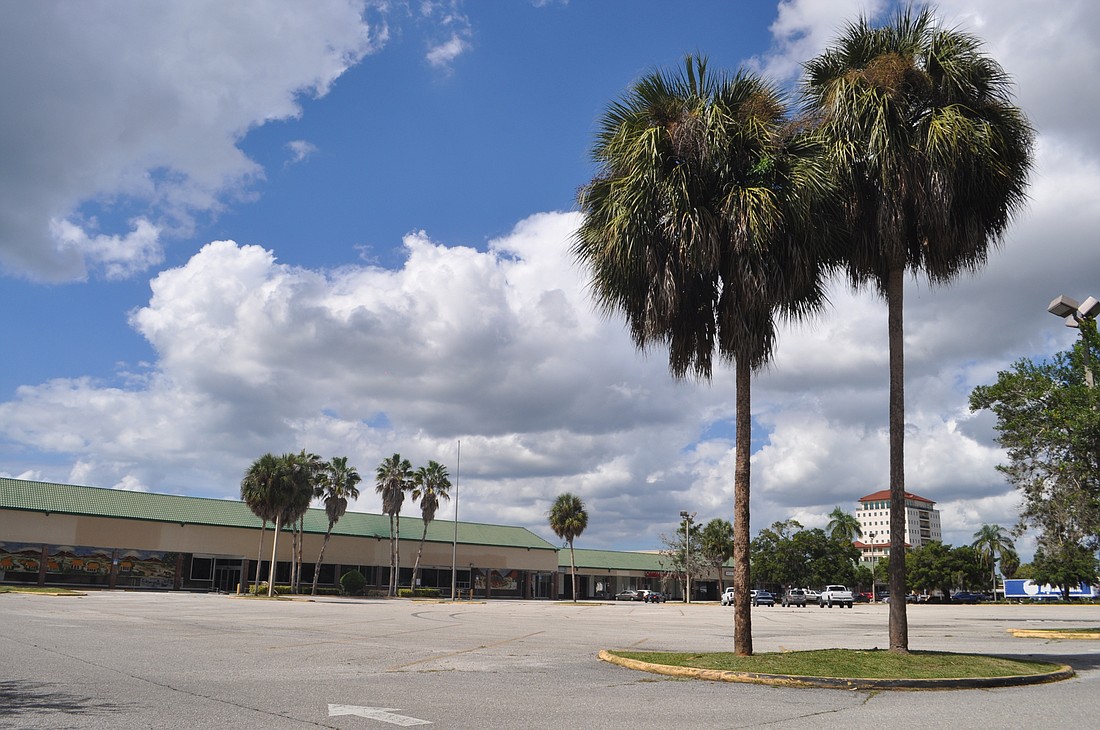- May 3, 2024
-
-
Loading

Loading

On Monday, the City Commission unanimously approved a settlement agreement with the owners of the Ringling Shopping Center.
The deal could potentially end a legal battle that has been ongoing for more than two years, sparked by the city’s 2013 rejection of a proposed Wal-Mart at the site. Still, questions linger.
Will the current building remain? What stores will be allowed on the land? What might a new building have to look like?
And what, exactly, do the property owners have planned?
The Doyle Family Trust, which owns the mostly vacant shopping center at Lime Avenue and Ringling Boulevard, doesn’t have to answer that question for a year. At Monday’s City Commission meeting, a representative for the property owners said there is no concrete vision for what should be developed on the land.
The city laid out three options for the property owner: Renovate the existing building, redevelop under current zoning regulations or redevelop under new zoning regulations. The property owners must choose their course within one year.
If consummated, the deal would bring an end to multiple legal claims following the Wal-Mart rejection. When owner Louis Doyle resumed his push to redevelop the shopping center, some residents grew concerned the Wal-Mart big-box store proposal would be submitted again.
City Attorney Robert Fournier said that scenario couldn’t come to bear under any of the options. If it were up to the city, Option C would be the choice: downtown zoning regulations would be in line with the city’s current vision for ideally development. Still, Fournier said the goal is to get the property revitalized.
“We’re open to the downtown zoning,” Fournier said. “We’d like to do that, but we’re not going to force it on the property owner.”
"We're open to the downtown zoning. We’d like to do that, but we’re not going to force it on the property owner." — Robert Fournier
Attorney Robert Lincoln, who appeared at Monday’s meeting to represent the property owners, said the easiest option for the Doyles would be to rehabilitate the existing structure. The easiest option might not be the most financially sound, though.
“What they know is, if they do that, their ability to get higher-end national and other clients is limited,” Lincoln said. “They have a pretty strong incentive to try and figure out how to make sure the second or third alternatives work.”
After an option is selected, any specific site plans would still be subject to city review.
Although the property owners are exploring the option of working with the downtown zoning, possibly on a phased development, Lincoln said it is difficult to find developers willing and able to work within those new urbanist regulations. As a result, the owners believe it is more probable that they will use the existing zoning.
“I would say they think the most likely thing to happen is that somebody will figure out how to do a more conventional-type redevelopment of the site under the existing zoning,” Lincoln said.
Here’s a breakdown of the three options the city has presented to the Ringling Shopping Center property owners:
The property owner remodels or renovates the current Ringling Shopping Center structure under the existing zoning.
The Ringling Shopping Center, constructed in 1954, was originally zoned as Commercial Shopping Center-Neighborhood in 1977. Today, it’s the only property in the entire city with that zoning designation — and city regulations make it so no other property can get that designation in the future.
The city’s design preferences have changed since the '70s. Still, the settlement agreement gives the property owners the ability to maintain the property in its existing strip-mall configuration.
Under this option, the city would lift setback regulations so the property owners could construct a smaller new retail use with a drive-thru near Ringling Boulevard and Lime Avenue. Per CSC-N regulations, buildings could cover no more than 30% of the property.
The property owner redevelops the land under the existing zoning.
The property owners also have the option to demolish the existing shopping center to build a new structure.
This would have to conform to some CSC-N regulations regarding building coverage and minimum setbacks, though there would be no minimum setback along Ringling Boulevard.
A portion of the land along Shopping Avenue, currently zoned for residential single-family development, could be designed for stormwater usage and pedestrian access to the redeveloped property.
The city rezones the property, and the property owner develops the land under downtown zoning regulations.
Under Downtown Edge and Downtown Neighborhood Edge zoning regulations, any developer would have to comply with the new urbanist design principles that guide those classifications.
An emphasis on form, rather than use, means that a department store such as Wal-Mart could be developed under these regulations. However, a suburban-style “big box” store would not fit the design criteria outlined in the zoning code.
The existing sign at the shopping center would not be allowed on a pedestrian-oriented primary street. Under the proposal, Ringling Boulevard would be designated as a primary street — except for one 100-foot-wide portion. This would allow for the construction of a new monument sign and an entrance to the interior of the property.